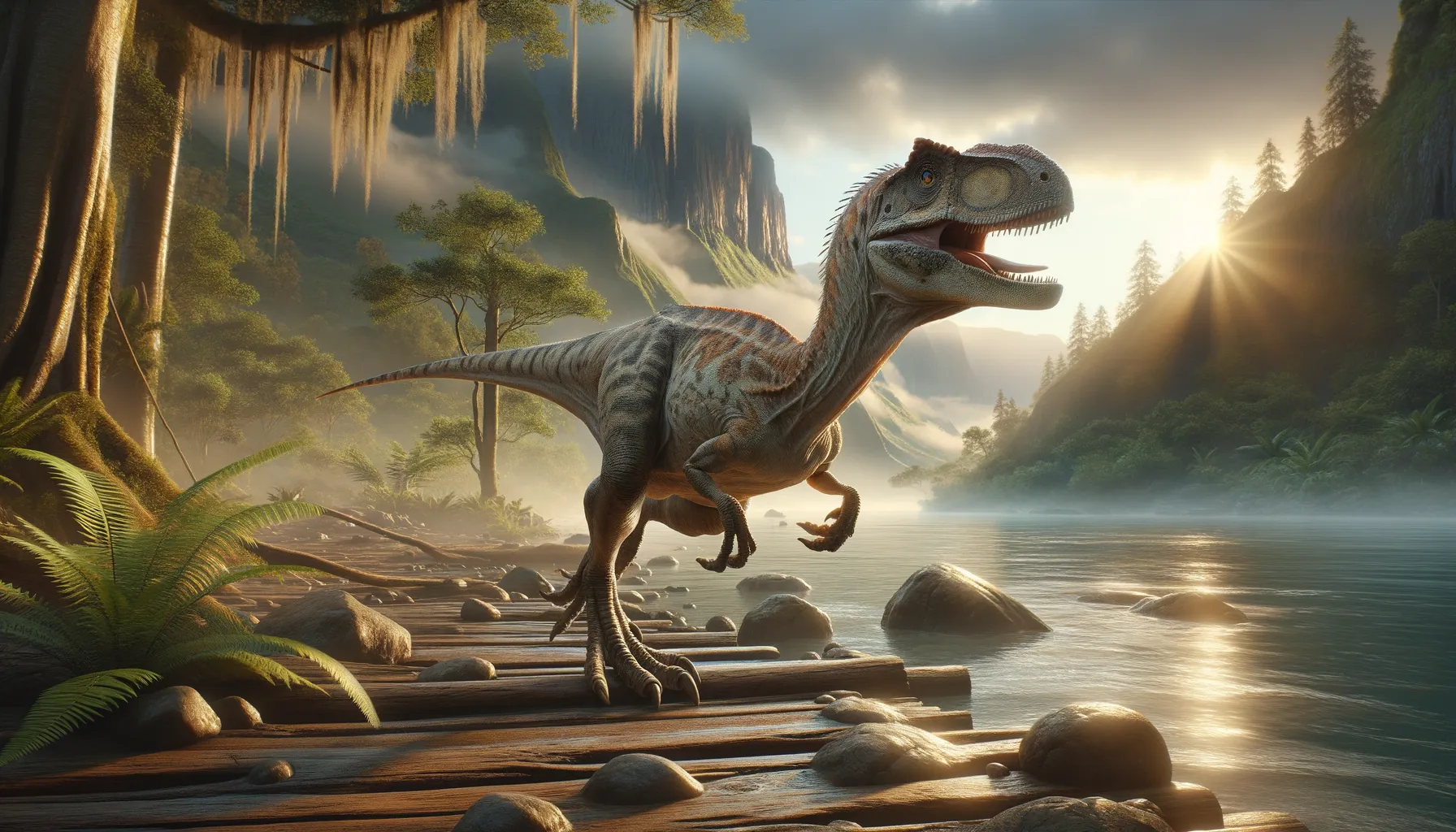
Leptorhynchos
The small theropod with a mighty beak.
Period
Cretaceous
Length
Measured around 2 meters long.
Height
Stood approximately 1 meter tall.
Weight
Weighed about 50 kilograms.
Leptorhynchos was a small to medium-sized theropod from the Cretaceous period, known for its distinctive beak and light frame. Its fossils suggest that it had unique adaptations for feeding, possibly including omnivorous tendencies. The creature’s skeleton indicates that it was built for agility, capable of quick, precise movements that would have aided in foraging and survival. Leptorhynchos lived in a variety of environments, demonstrating adaptability and resilience in diverse habitats.
Diet
Leptorhynchos likely had an omnivorous diet. It would have fed on both plants and small animals, taking advantage of various food sources available in its environment.
Hunting
This dinosaur may not have actively hunted larger prey but likely scavenged and caught small animals or insects. Its beak was an asset for picking and tearing food efficiently.
Environmental challenges
Leptorhynchos had to contend with fluctuating environmental conditions, ranging from periods of drought to rainy seasons. Such variations would have impacted its food supply and habitat stability, requiring adaptability. Competition for resources with other species likely influenced its survival strategies, incentivizing niche adaptation.
Speed
Moderate; likely capable of short bursts.
Lifespan
Estimated to live around 10 to 20 years.
First discovery
Discovered in the late 20th century in North America.
Fun Facts
- Leptorhynchos was a small dinosaur, roughly the size of a turkey, making it one of the smaller members of its group.
- This dinosaur had a unique beak-like structure, similar to modern parrots, which it likely used to clip plants and leaves.
- Leptorhynchos lived during the Late Cretaceous period, which was around 75 million years ago.
- Fossils of Leptorhynchos have mostly been found in North America, particularly in places like Montana.
- Despite its small size, Leptorhynchos was likely a very agile animal, possibly able to run quickly to escape predators.
- The name Leptorhynchos means "slender beak," highlighting its distinctively shaped snout.
- It is believed that Leptorhynchos was an herbivore, primarily feeding on plants and seeds.
Growth and Development
Leptorhynchos likely experienced rapid growth in its early years to reach maturity quickly. This growth would have been necessary to escape predation and compete for resources. Like many dinosaurs, it probably underwent growth spurts influenced by environmental factors and food availability.
Habitat
Leptorhynchos inhabited regions that were a mix of open areas and forested spaces. These environments provided a variety of food sources and opportunities for shelter. The adaptability to different terrains helped Leptorhynchos thrive in various climatic and geographical conditions.
Interaction with other species
Leptorhynchos coexisted with larger dinosaur species, some of which may have been predators. It likely developed strategies to avoid these threats, such as hiding or utilizing its speed for escape. Additionally, it may have foraged alongside other small dinosaur species, sharing food resources and possibly forming loose associations.
Natural lifespan
Typically, Leptorhynchos lived up to 20 years in the wild.
Reproduction
Leptorhynchos likely laid eggs, as was common among theropod dinosaurs. Nesting behavior might have involved communal areas or hidden nests for the protection of eggs. Hatchlings may have been precocial, gaining independence relatively quickly.
Social behaviour
While specific social behavior of Leptorhynchos is not well documented, it may have been somewhat solitary but able to interact with peers when resource availability required cooperation. It's plausible that they exhibited some degree of territorial behavior, especially during the breeding season.
Fossil locations
Fossils of Leptorhynchos have been primarily found in North America. The sites include areas in Canada and the northern United States, which offer insights into its habitat preferences. These locations reveal a spread over diverse ecosystems, highlighting its adaptability.
